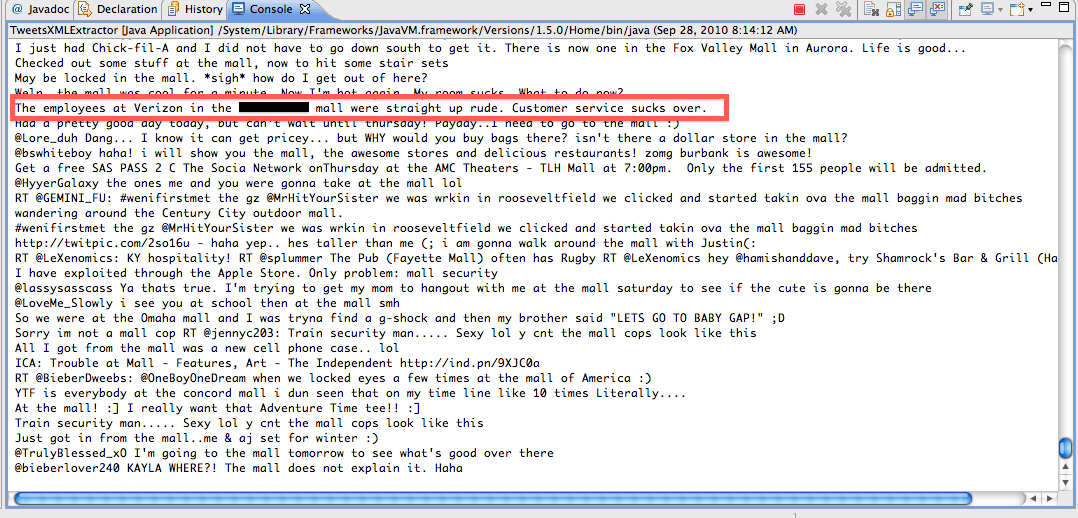So far we have seen several examples on how Predictive Analytics applied in Social Media and Blog posts can help us suggest better strategies in Marketing, Branding, Sales and PR . This post is a walk-through example on how we can choose a concept, extract what users write about this concept on Twitter, get insights on how consumers think / behave about it and finally group similar consumer thoughts and experiences using Cluster Analysis.
So far we have seen several examples on how Predictive Analytics applied in Social Media and Blog posts can help us suggest better strategies in Marketing, Branding, Sales and PR . This post is a walk-through example on how we can choose a concept, extract what users write about this concept on Twitter, get insights on how consumers think / behave about it and finally group similar consumer thoughts and experiences using Cluster Analysis. A “concept” could be:
– Any activity
– A Brand (e.g Apple Inc.)
– A Product / Service
– A Politician
and -almost- anything discussed in user Tweets.
What we will look at is work that was made specifically for understanding what consumers think, liked or disliked while visiting a shopping Mall. What do people feel when visiting a Mall? Which words are associated with a positive experience or when a smiley is present in Tweets about Malls? Using the Twitter API approximately 36000 distinct Tweets where collected on consumer experiences from visiting a shopping Mall (sample below shows an example of a consumer’s negative sentiment):

So how can an analyst get into a consumer’s mind by analyzing Tweets and how would this information be useful? To find some answers I teamed up with Marketing Strategist Dr Nikos Dimitriadis to assist me in the actionability and interestingness of each extracted insight. Note that we capture thoughts from a biased sample which means that we cannot make inferences about the general population. However this work can be a great additional tool for finding new ideas and insights for Marketing initiatives -on top of more traditional methods such as focus groups- and also enables us to form several hypotheses as to what could likely work.
After a number of pre-processing steps to clean captured Tweets from irrelevant information (such as links), replace words with their synonyms and remove frequently occurring words such as ‘and’, ‘to’, ‘at’, ‘in’ and ‘mall’ and also filter all Tweets having a small length i started performing frequency counts of the words contained in Tweets about Malls :
we immediately notice how often LOL and 🙂 (smiley) appear in Tweets about being, going or returning from
the Mall which also gives us examples of consumers being in a specific mood . Here is what happens when we look at the most frequently occurring 2-word phrases:
and 3-word phrases (Note : ive = i’ve):
Looking at the two charts we also notice that we frequently find the phrases:
– My best friend : since consumers Tweet the fact that are visiting a Mall with their best friend.
– My nails done : appears to be one of women’s frequently discussed activity.
We then could look at Words and Phrases that seem interesting in understanding consumer experiences and values when visiting a Mall, such as :
– Shop
– Shoes
– Parking Lot
– Food Court
– Need / Want
– Walk around
– Made my Day
– Post Picture FaceBook
– Parking Lot
– Food Court
– Need / Want
– Walk around
– Made my Day
– Post Picture FaceBook
and mine through all these words / phrases to understand what consumers think : What exactly made the day of consumers who used the phrase “Made my Day” in their tweets? How do consumers feel when they visit the Mall with their best friend? when they are alone? Which activities trigger positive feelings? But more importantly : How could one use this information to better understand consumers and Market a concept?
More on the next post.